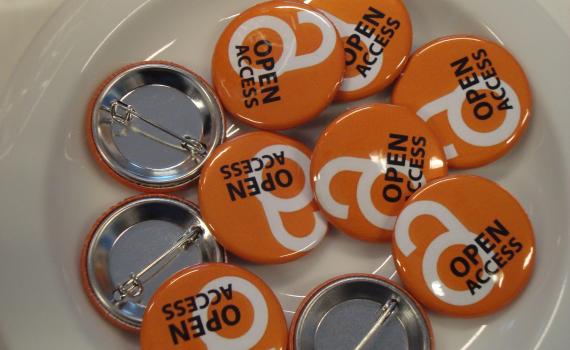Open Access Best Practices and Licensing
Open Access
Open Access (OA) involves making scholarly research articles freely available and accessible online, thus enhancing knowledge sharing and collaboration. It encompasses types like Green OA, where authors deposit their accepted manuscripts (postprints) in institutional or subject repositories, and Gold OA. Under this latter model, articles are published in OA journals, are made available and accessible immediately after acceptance/publication, and Article Processing Charges (APCs) apply. Diamond OA grants access through institutional funding without charging any APCs to authors. Hybrid OA provides selective OA to subscription journal articles by charging APCs.
The significance of OA lies in democratizing information, accelerating research, and boosting research impact. The process of submitting preprints to preprint repositories is gaining momentum. Sharing work in progress to seek feedback and assert priority is now routinely being done. Notable examples of preprint servers are arXiv and bioRxiv. The Directory of Open Access Journals (DOAJ) is the most comprehensive community-curated database of OA journals. For further information on OA and the OA movement, consult the SPARC and Open Access Week websites, and for making informed decisions about publishing articles in journals, ThinkCheckSubmit may be consulted.
Impact and Open Metrics
The OA movement is crucial to facilitate a more inclusive and collaborative research environment, which in turn leads to progress and accessibility. The publication of research in OA journals presents a compelling opportunity to enhance the visibility and impact of scholarly work. Researchers can strategically select reputable OA journals tailored to their specific field and target audience, thus ensuring a broader readership, increased citations, and potential collaborations. To maximize the impact of their work, authors can adopt best practices that contribute to both scholarly and societal advancements. To effectively harness the potential of OA, researchers should familiarize themselves with the principles, policies, and funding requirements pertinent to their fields and institutions.
Open metrics offer transparent and accessible methods for evaluating the impact of scholarly research. They go beyond traditional citation-based metrics by encompassing a wider range of indicators that reflect research influence and societal impact. These indicators take into account elements such as social media mentions, downloads, and citations. Open metrics are especially important in the context of OA, aligning with principles of transparency and openness. They provide comprehensive insights into research impact, allowing for a holistic understanding that goes beyond journal-based measures. This enables effective assessment of the societal value and reach of research by researchers, institutions, funders, and policymakers. Platforms like Altmetric.com and Plum Analytics provide researchers with a comprehensive understanding of the reach and influence of their research outputs, moving beyond conventional citation-based metrics.
 The San Francisco Declaration on Research Assessment (DORA) acknowledges the significance of evaluating scholarly outputs and researchers based on their inherent value. It underscores that metrics should not replace the assessment of individual research quality. Moreover, DORA emphasizes the need to consider the context and methodology of journal metrics when using them to inform publication choices.
The San Francisco Declaration on Research Assessment (DORA) acknowledges the significance of evaluating scholarly outputs and researchers based on their inherent value. It underscores that metrics should not replace the assessment of individual research quality. Moreover, DORA emphasizes the need to consider the context and methodology of journal metrics when using them to inform publication choices.
Copyrights & Open Licensing
Copyright plays a pivotal role in scholarly communication, particularly within the realm of OA. While copyright safeguards original ideas, overly restrictive practices can impede the flow of knowledge and hinder research accessibility. The traditional publishing model, involving the transfer of copyright to publishers, limits access and inflates costs. OA serves as a solution to this problem by offering unrestricted access. Creative Commons licenses, operating within the framework of copyright law, empower authors to retain rights while granting permissions. When opting for open publication, researchers must familiarize themselves with copyright policies and licensing. Open licenses enable researchers to specify use and usage permissions, ensuring unrestricted availability for others to read, reuse, adapt, and attribute their work.
Within scholarly communication, open licensing plays a pivotal role in making work openly accessible while preserving rights and control. Open licenses facilitate dissemination, collaboration, and knowledge exchange by offering clarity and reducing access barriers. They promote transparency and can be applied to various research outputs, seamlessly aligning with OA principles. Open licensing extends permissions beyond default copyright law, granting creators the ability to define how others can access, engage with, share, and build upon their work. Creative Commons licenses exemplify this approach.
Best Practices in OA Publishing
Open licenses, such as Creative Commons, are crucial for publishing research outputs.
The best practices for OA include a range of considerations that researchers should consider. First and foremost, it's advisable to prioritize OA journals or preprint servers, platforms that align with the principles of OA, thus ensuring that research gains widespread visibility. Uploading preprints to servers enables rapid dissemination and early feedback, which fosters transparency and collaboration in research efforts. Embracing open data and code sharing practices further enhances transparency, reproducibility, and collaboration, enabling peer validation and in-depth analysis. Open licenses, such as Creative Commons, are crucial for publishing research outputs, as they specify permissions and encourage the development of derivative works. To improve both reproducibility and comprehensiveness, it is important to make supplemental materials openly available. Active involvement in OA communities provides a platform for fruitful collaboration with like-minded researchers, contributing to broader OA initiatives. Finally, maintaining ethical publishing practices is paramount – this includes upholding ethical standards, avoiding questionable (predatory) journals, adhering to proper citation practices, preventing plagiarism, and taking on the responsibility of ethical authorship. The credibility, visibility, and impact of researchers' scholarly contributions in the OA landscape can be significantly enhanced by embracing these practices.
Creative Commons
Creative Commons is a nonprofit organization that offers a set of free, legally based tools for creators to share their creative works with others while retaining certain rights. The primary purpose of Creative Commons licenses is to enable a more flexible and open approach to copyright, allowing creators to specify how their works can be used by others. There are several types of Creative Commons licenses, each represented by a combination of symbols and letters, indicating different levels of permissions. These licenses provide creators with various options to define how others can use their works, whether or not for commercial purposes, allowing modifications, or simple sharing with proper attribution.
The main Creative Commons licenses include:
- Attribution (CC BY): This license permits others to use, remix, modify, and distribute the work, even for commercial purposes, as long as they credit the original creator appropriately.
- Attribution-ShareAlike (CC BY-SA): Similar to CC BY, this license allows remixing, modification, and distribution, with the condition that derivative works must be shared under the same license terms.
- Attribution-NoDerivs (CC BY-ND): This license allows others to redistribute the work for both commercial and non-commercial purposes, but prohibits changes or derivative works.
- Attribution-NonCommercial (CC BY-NC): This license allows others to use, remix, and modify the work, excluding for commercial purposes. Proper attribution is required.
- Attribution-NonCommercial-ShareAlike (CC BY-NC-SA): Similar to CC BY-SA, this license restricts the work's use for commercial purposes.
- Attribution-NonCommercial-NoDerivs (CC BY-NC-ND): The most restrictive license, it permits others to download and share the work with proper attribution, but prevents any changes or commercial use.
Authors can select the license that best aligns with their intentions for their work. These licenses provide a legal framework for sharing and collaboration in the digital age while respecting creators' rights. It's important to note that while Creative Commons licenses are a powerful tool for sharing content, they do not replace copyright law; rather, they work within the existing framework to provide more flexible options for creators and users of creative works.
Conclusion
By adopting sound publishing practices, researchers advance the principles of OA, benefiting the scientific community and society at large. It is imperative for them to select reputable OA journals or platforms aligned with their research focus and target audience. Considerations such as peer-review quality, indexing, licensing options, and visibility are crucial. Licensing options, such as Creative Commons licenses, effectively communicate permissions and restrictions for research outputs. OA revolutionizes research by fostering collaboration, knowledge sharing, and increasing impact. The choice of a suitable publishing platform embracing OA, combined with the use of appropriate tools, amplifies research impact and encourages interdisciplinary collaborations. OA democratize knowledge, maximize research impact, and propel scientific progress. Researchers can expand their audience, foster collaborations, and promote transparency, thereby nurturing an inclusive and innovative research ecosystem.
Sridhar Gutam is a senior scientist at ICAR–IIHR (Indian Council of Agricultural Research–Indian Institute of Horticultural Research), Bengaluru, and the Convenor of Open Access India. He can be reached on X (formerly Twitter) at @SridharGutam or via email at gutam2000@gmail.com.
